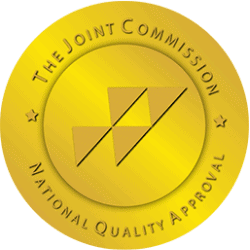Of all the catalysts for addiction, chronic pain is perhaps one of the most pervasive. There’s a common misconception that addiction is a choice. Some people may choose to abuse substances, but becoming hooked is never a part of the plan. Addiction is a mental health disorder, and should always be viewed as such if successful intervention is to take place.
Oftentimes, people have no intention of using prescription drugs recreationally, especially as it relates to chronic pain. However, unfortunately, chronic pain management has the potential to be a gateway to tolerance, dependence, and addiction. At Ambrosia, our goal is to help educate people on chronic pain management and substance abuse prevention. Those taking medication for chronic pain must have the resources available to both prevent and treat addiction.
What Is Chronic Pain?

Chronic pain is a complex condition characterized by persistent pain that lasts longer than three months; chronic pain often outlasts the normal healing time for an injury or illness. Unlike acute pain, which serves as a warning signal for the body, chronic pain can occur without a clear cause; it may continue long after the initial injury has healed. Chronic pain can have a massive impact on various parts of the body. This is often accompanied by other symptoms such as fatigue, sleep disturbances, and mood changes.
For many, chronic pain can significantly impact daily life and is debilitating. Chronic pain has the potential to hinder physical activities and reduce overall quality of life. Effective management is imperative. It often requires a multidisciplinary approach, including medication, physical therapy, and psychological support.
How is Chronic Pain Different from Acute Pain?
Chronic pain and acute pain serve distinct roles in the body’s response to injury and disease. Acute pain is typically a short-term sensation that arises suddenly due to a specific injury or condition. Acute pain acts as a warning signal to the body that it is experiencing some degree of pain. This type of pain usually resolves itself as the underlying issue heals, often within days or weeks.
In contrast, chronic pain persists for an extended period; it is often defined as lasting more than three months, beyond the typical healing time. It can come from an initial injury or may occur without any identifiable cause, significantly affecting a person’s quality of life. Chronic pain often involves complex physiological processes. This includes changes in the nervous system and may require ongoing management and intervention.
Chronic Pain and Health Conditions
Chronic pain is a complex health issue that affects millions of individuals, significantly impacting their quality of life. This persistent discomfort often accompanies various health conditions; chronic pain, oftentimes, includes arthritis, fibromyalgia, and nerve damage. This has the potential to lead to physical limitations and emotional distress. Managing chronic pain involves a comprehensive approach to treatment. That may include physical therapy, medication, lifestyle modifications, and alternative therapies such as acupuncture or yoga. Understanding the connection between chronic pain and underlying health conditions is crucial; it enables healthcare providers to tailor treatment plans that address both the symptoms and the root causes. Ultimately this fosters better overall health and well-being for those affected.
Chronic Pain and Opioid Abuse
Chronic pain affects millions of individuals, often leading to a cycle of suffering that can severely impact quality of life. To manage persistent discomfort, many patients turn to opioid medications; these are known for their effectiveness in pain relief. However, the use of opioids also carries significant risks, including the potential for abuse and addiction.
As dependence develops, individuals may escalate their use beyond prescribed amounts. Patients may be seeking stronger drugs or resorting to illegal substances to alleviate their pain. This dangerous cycle not only exacerbates the issue of chronic pain but also poses serious health risks. This cycle highlights the need for alternative pain management strategies and comprehensive support systems to mitigate opioid abuse.
Can Chronic Pain Lead to Addiction?
Chronic pain can indeed lead to addiction. This is particularly true when individuals turn to substances such as painkillers to cope with their discomfort. The persistent nature of chronic pain often results in a cycle where the continued use of medication can lead to physical dependence. Ultimately, this has the potential to lead to addiction, and more times than not, it does. This is true regardless of what the intention was behind being treated. This is especially true for opioid medications, which, while effective for pain relief, carry a significant risk of misuse and dependency.
Additionally, people struggling with chronic pain may also seek out illegal substances as a means to alleviate their suffering. Seeking illegal substances for pain management may further compound the risk of addiction. Understanding this connection is crucial for developing effective treatment strategies that address both pain management and the prevention of substance abuse.
Can Pain Management Lead to Addiction?
Pain management is a critical aspect of long-term health; however, it can lead to addiction, particularly when strong medications such as opioids are prescribed. While these drugs are effective in alleviating severe pain, their potential for misuse and dependence is significant. Patients may develop a tolerance over time, requiring higher doses for the same effect, which can increase the risk of addiction. Healthcare providers must monitor patients closely and explore alternative pain management strategies. This could include physical therapy, acupuncture, or cognitive-behavioral therapy. These have the potential to minimize the chances of developing an addiction while effectively managing pain. Balancing pain relief with the risks of addiction is a complex but vital part of treatment planning.
Substances Associated With Pain Management
Pain management is often approached through various substances that target and alleviate discomfort. These substances can be broadly categorized into two groups: pharmaceuticals and natural remedies. Pharmaceuticals typically include nonsteroidal anti-inflammatory drugs (NSAIDs) like ibuprofen and naproxen, which reduce inflammation and pain. Opioids, such as morphine and oxycodone, are potent pain relievers often reserved for severe pain.
Anticonvulsants and antidepressants can be effective for neuropathic pain. On the other hand, natural remedies like turmeric and omega-3 fatty acids have also gained recognition for their anti-inflammatory properties. Additionally, capsaicin, found in chili peppers, can provide pain relief by desensitizing nerve receptors. Understanding the various substances available for pain management is crucial for developing effective treatment plans. It is imperative to develop plans that are tailored to individual needs to ensure the most successful results.
How Many People Suffer from Chronic Pain and Addiction?
 Chronic pain and addiction are significant public health concerns affecting millions of individuals worldwide. According to estimates, approximately 20% of adults in the United States experience chronic pain; this can lead to limitations in daily activities and diminished quality of life. Additionally, nearly 8% of adults contend with a substance use disorder, often exacerbated by the misuse of prescription pain medications. The intersection of these two issues is complex, as individuals suffering from chronic pain may turn to addictive substances for relief; this creates a cycle that can be difficult to break and oftentimes leads to a dual diagnosis.
Chronic pain and addiction are significant public health concerns affecting millions of individuals worldwide. According to estimates, approximately 20% of adults in the United States experience chronic pain; this can lead to limitations in daily activities and diminished quality of life. Additionally, nearly 8% of adults contend with a substance use disorder, often exacerbated by the misuse of prescription pain medications. The intersection of these two issues is complex, as individuals suffering from chronic pain may turn to addictive substances for relief; this creates a cycle that can be difficult to break and oftentimes leads to a dual diagnosis.
How Common is Chronic Pain in the Addiction Space?
Chronic pain is a prevalent issue within the addiction space; it oftentimes complicates both the treatment of substance use disorders and the management of pain itself. Studies indicate that individuals struggling with addiction frequently report higher rates of chronic pain compared to the general population. This can create a vicious cycle; individuals may turn to drugs or alcohol to cope with their pain, leading to increased dependency. Healthcare providers must navigate the delicate balance of effectively treating pain in these patients without exacerbating their addiction issues. That being said, the intersection of chronic pain and addiction is a crucial area of focus in therapeutic settings.
Psychological Components of Chronic Pain and Addiction
Chronic pain and addiction are intricately linked through various psychological components that influence an individual’s experience and response to both conditions. One significant aspect is the role of anxiety and depression; many individuals suffering from chronic pain may develop these mental health issues as a reaction to their ongoing discomfort and limitations. This emotional distress can lead to an increased likelihood of substance use.
Cognitive factors such as catastrophizing, where individuals expect the worst outcomes and feel helpless, can exacerbate the perception of pain. This influences further reliance on substances as a coping mechanism. Addressing these psychological components is essential for effective treatment strategies that aim to break the cycle of chronic pain and addiction.
How to Treat Chronic Pain and Addiction
Treating chronic pain and addiction requires a multifaceted approach that considers both physical and psychological factors. For chronic pain, management options may include medications such as analgesics, anti-inflammatory drugs, or opioids for severe pain. Not only that, but physical therapy may also be necessary. This could include acupuncture and mindfulness practices like meditation or yoga.
Addressing addiction often involves behavioral therapies, support groups, and medications designed to alleviate withdrawal symptoms and cravings. Individuals must work closely with healthcare professionals to develop a personalized treatment plan. This ensures that a patient will have a treatment experience optimized for them to succeed long-term.
Help is Accessible at Ambrosia

Chronic pain is difficult to deal with. Pain medication may make it easier to cope, but it also has the potential to lead to addictive tendencies. At Ambrosia, we want to see those struggling with pain management and addiction overcome their obstacles. If you or a loved one would like to find out more, you can contact us here.



